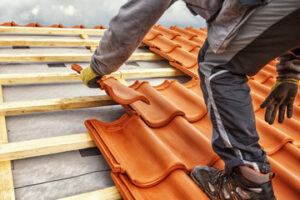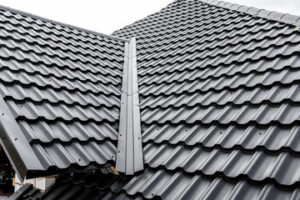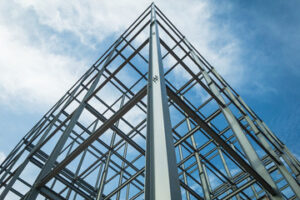How to Prepare Your Home for Roofing Installation
The first step in a roof replacement is to tear off the old shingles and underlayment. This exposes the roof deck, allowing for a thorough inspection.

Next, lay underlayment, which could be ice and water shield or tar paper for extra moisture protection. Make sure to overlap shingle underlayment by 4 inches at eaves and 6 inches in valleys. Get a Free Quote Today by reading the article below.
When installing a roof, the type of material chosen is crucial. Each roofing material has unique qualities that make it ideal for certain climates and architectural styles. It is important to choose a material that will not only meet your budget and aesthetic preferences, but also ensure your home’s safety. Some of the most common materials include shingles, metal, clay and concrete.
The roof decking, also known as sheathing, is the base layer on which shingles or other roofing materials are applied. It provides structural support to the roof and prevents water leaks. Sheathing can be made from wood or engineered materials like plywood or OSB. It is nailed to the joists or trusses of the roof, and there are two primary types: plank sheathing and sheet sheathing. Plank sheathing is comprised of elongated wooden boards that are nailed directly to the rafters. The newer option is sheet sheathing, which uses plywood or OSB and is nailed to the joists and trusses in a flat sheet-like manner.
During roofing installation, a layer of roof underlayment is added to protect the sheathing from moisture penetration. This can be asphalt-saturated felt or synthetic underlayment. It is important to ensure the underlayment is properly installed, and that no bare spots are exposed before starting shingle installation. After the underlayment is in place, starter shingles are placed at the eave, and then main shingles are laid in a staggered pattern. It is critical to follow the manufacturer’s instructions for shingle spacing and alignment. Flashing is also installed in valleys, around dormers and vents, and chimneys to help water shed properly and prevent leaks.
There are many shingle styles to choose from, such as asphalt shingles and metal shingles. These are available in a variety of colors and textures to complement the architecture of your home. Other roofing options include tile and slate, which are renowned for their durability and aesthetic. Slate is a popular choice in cold climates, and can last 50 years or more with proper maintenance. It is extremely heavy and requires a strong roof structure to support it.
Planning
The roofing installation process involves a significant time commitment and requires a strong understanding of roofing techniques and building codes. Depending on the complexity of the project, it may also involve other trades to complete work like masonry, rebuilding a parapet, raising weep systems and more.
The planning phase is a critical part of the overall project and allows homeowners to gain a holistic overview of the upcoming work. The team explores past challenges, future expectations and aesthetic preferences to provide a tailored roadmap for the job. They also evaluate internal and external elements, including weather patterns that might influence material choices and installation timings. The goal is to ensure the project runs smoothly, without unnecessary delays and disruptions. Regular communication is important, and laying out clear protocols allows everyone to feel prepared for the upcoming work.
Preparation
Whether you’re replacing an existing roof or installing a new roof, proper preparation is key. This will ensure a smooth and safe installation. Here are some things to keep in mind:
Clear the Work Area
The work site needs to be free of debris and obstructions. This will allow the roofer to move safely around the house and complete the job. You’ll want to remove lawn ornaments, kids’ toys, grills, patio furniture, plants and any other items that might get in the way of the project. Depending on the weather, you may want to cover items with large tarps to protect them from rain or sun.
Prepare the Work Surface
Roofing materials are installed in layers and must be properly prepared to ensure the integrity of your roof. The roof must be free of dirt, grease, contaminants, moisture, tools and debris. These factors can impact coating adhesion and ultimately lead to a failed restoration project.
Inspect the Work Area
Throughout the project, it’s important to maintain open communication with your contractor. This will help ensure that any concerns are addressed quickly and that the project stays on schedule. It will also allow the contractor to catch any problems early and make necessary adjustments to keep your home watertight and secure.
Inspect the Flashing and Sealing
A successful roof requires attention to detail, especially in critical areas like the ridgeline, vents, chimneys and roof valleys. The roofer will install sheathing, ice barrier and flashing to protect these areas from water infiltration. Flashing is a thin material that directs water away from these areas, which can otherwise cause leaks.
You should also pay special attention to the attic. This is where most roof leaks originate and can be difficult to detect. A thorough inspection will check for missing shingles, loose or cracked shingle tabs and any signs of moisture or mold. A final walkthrough is also an opportunity to clarify any questions and discuss future maintenance for your new roof. By taking these precautions, you can ensure that your roof is properly installed and protected for years to come.
Installation
Once the prep work has been completed, the roofing contractors can start the actual installation process. They begin by installing any necessary flashing and sealants, which protect the vulnerable areas of your roof from water infiltration and damage. This includes the valleys of your roof, as well as any chimneys or vents you might have on the structure. Drip edge, a metal strip that helps to direct water away from the eaves of the roof, is also installed.
Next, the shingles are laid, starting at the eaves and working their way across the entire surface of the roof. They are carefully overlapped, and nails are used to secure them in place. The roofers will also install any skylights, vents, or other accessories you may have on your home.
A final inspection is conducted to ensure that the installation has met industry and manufacturer standards. It is also a good opportunity to provide feedback and discuss any follow-up steps or recommendations. The contractor will blow off any remaining debris and leave the site clean, so residents and pets are not harmed by sharp objects or nails.


